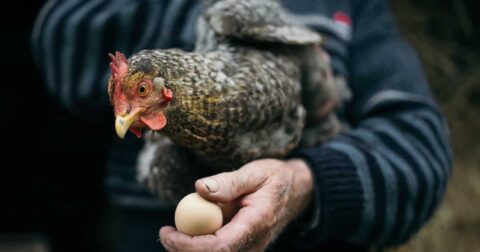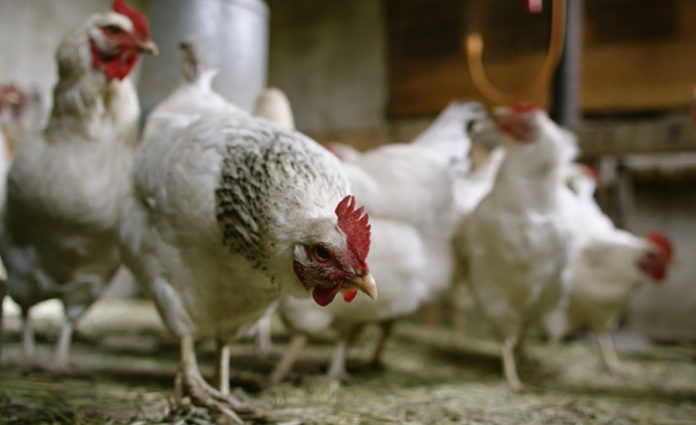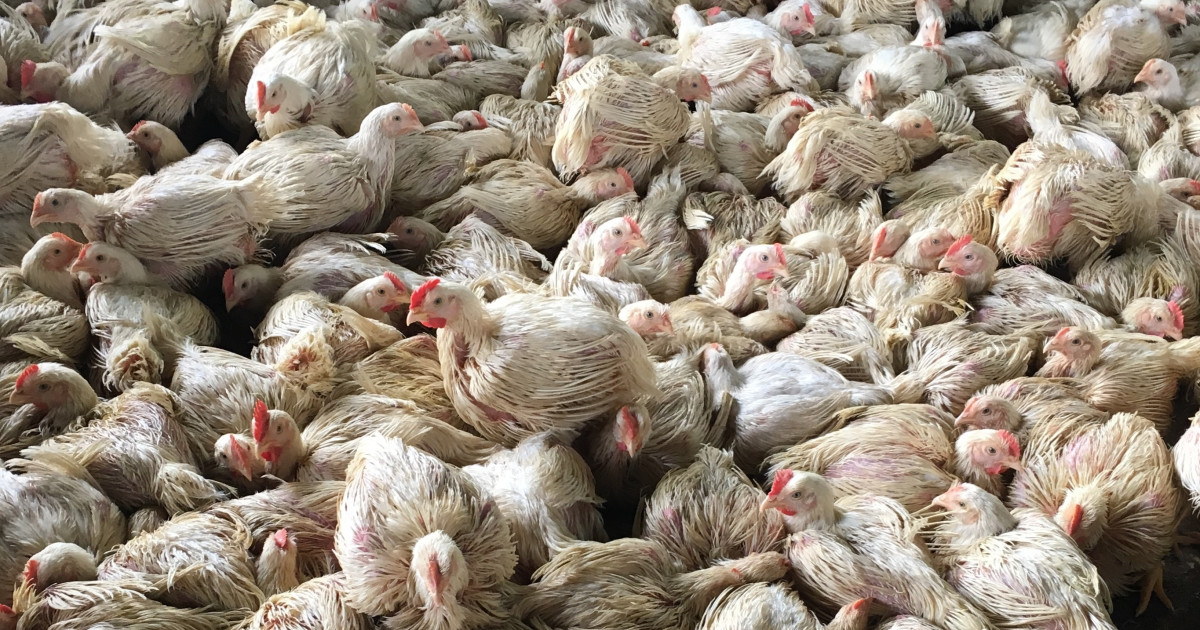Introduction

In today’s society, chicken has become a staple food for many households, making it important to understand the factors that contribute to the fluctuating cost of this poultry product. From farmers who raise and feed the chickens to the processors and distributors who package and transport them, every step of the supply chain plays a role in determining the final price per pound. In this article, we will delve into the various factors that affect the cost of chicken, including farming and production expenses, processing and packaging costs, distribution and transportation charges, and the role of market demand. By understanding these factors, consumers can make informed decisions about purchasing affordable and high-quality poultry products.
Overview Of The Chicken Price Per Lb.
The price of chicken per pound can vary depending on various factors. On average, the cost of live chickens ranges from $1.50 to $3.00 per pound. However, it is important to note that pricing may be influenced by geographical location and market conditions. Chicken breast, a popular cut, is commonly found on menus and inventories across all types of restaurants. Restaurant operators should consistently monitor chicken breast prices to strategically adjust plate costs and menu prices. By staying informed about the market pricing trends, they can effectively manage their poultry expenses and maintain profitability.
Factors Affecting The Cost Of Poultry
There are several key factors that influence the cost of poultry. These include the cost of raising and feeding chickens, environmental factors, processing and packaging expenses, transportation costs, market demand, and supply dynamics. The cost of raising and feeding chickens can vary depending on factors such as feed quality and availability. Environmental factors like weather conditions and disease outbreaks can also impact prices. Processing and packaging costs add to the overall expenses. Transportation costs play a role in determining the final price, especially for long-distance shipments. Finally, market demand and supply dynamics can cause prices to fluctuate. Considering these factors is essential when evaluating chicken prices.
Farming And Production

Farming and production are critical components of the poultry industry that directly affect chicken prices. The cost of raising and feeding chickens plays a significant role in determining the final price per pound. Factors such as the quality and availability of feed can impact production costs. Additionally, environmental factors, such as weather conditions and disease outbreaks, can affect chicken growth and overall production. Farmers must prioritize proper care and housing for the chickens to ensure their health and well-being. By considering these factors, farmers can maintain high-quality poultry products and contribute to stabilizing chicken prices in the market.
Cost Of Raising And Feeding Chickens
The cost of raising and feeding chickens is an essential factor that contributes to the overall price of poultry. Farmers incur expenses in providing proper nutrition and care to the chickens throughout their growth cycle. The cost of various inputs such as feed, vaccinations, bedding, and equipment for housing can significantly impact production costs. Additionally, the quality and availability of feed can also influence expenses. Farmers must carefully calculate and manage these costs to ensure the health and well-being of the chickens while maintaining a competitive price in the market.
Environmental Factors Affecting Chicken Price
Environmental factors can have a significant impact on the price of chicken. One of the key factors is the cost of feed, which can be influenced by environmental conditions such as droughts or floods that affect crop yields. Additionally, extreme weather events can disrupt chicken production and lead to supply shortages, driving up prices. Environmental regulations and sustainability practices can also increase production costs, which may be reflected in higher chicken prices. Finally, the availability and cost of water and energy resources can affect production costs and ultimately impact the price of chicken in the market.
Processing And Packaging

Processing and Packaging play a crucial role in determining the cost of poultry. The cost of processing, including the labor, equipment, and facility expenses, can significantly impact the final price per pound of chicken. Furthermore, the packaging materials and design also contribute to the overall cost. Quality standards, such as ensuring proper handling and sanitation during processing and packaging, are essential factors that can influence the pricing of poultry products. Customers often expect hygienic and attractively packaged chicken, which may result in higher costs for producers.
Cost Of Processing And Packaging Chicken
The cost of processing and packaging chicken plays a significant role in determining the overall price per pound of poultry. This includes expenses related to labor, equipment, and facilities. Additionally, the choice of packaging materials and design also contributes to the cost. Maintaining quality standards throughout the processing and packaging stages is essential, as it ensures proper handling and sanitation. Meeting customer expectations for hygienic and attractive packaging may result in higher costs for producers. Overall, the cost of processing and packaging chicken is an important factor that affects the final price of poultry products.
Importance Of Quality Standards In Pricing
Quality standards play a crucial role in determining the price of chicken. Consumers expect poultry products that are safe, fresh, and of high quality. Meeting these expectations requires compliance with strict industry standards and regulations. Implementing and maintaining these standards throughout the processing and packaging stages ensures that the chicken is handled in a hygienic and safe manner. Producers who prioritize quality standards invest in proper sanitation practices, employ skilled labor, and use high-quality packaging materials. This attention to detail enhances the overall value of the product, justifying a higher price tag. Quality standards provide reassurance to consumers and build trust in the brand, ultimately influencing pricing decisions.
Distribution And Transportation

The cost of distribution and transportation also contributes to the overall price of chicken. Transportation costs, including fuel, labor, and vehicle maintenance, play a significant role in determining the final price per pound. Additionally, the distance between the production facility and the retailers or consumers affects transportation expenses. Factors such as the availability of efficient transportation networks, logistical challenges, and market demand in certain regions can impact distribution costs. These expenses are considered when determining the price of chicken, as they are necessary for ensuring that the product reaches the market in a timely and efficient manner.
Impact Of Transportation Costs On Chicken Price
Transportation costs have a significant impact on the price of chicken. Expenses such as fuel, labor, and vehicle maintenance contribute to the overall cost per pound. The distance between the production facility and the market also plays a role in transportation expenses. Areas further away or with limited transportation infrastructure may incur higher costs. These expenses are necessary to ensure that chicken reaches retailers and consumers in a timely manner. Taking into account transportation costs is crucial in determining the final price of chicken.
Factors Affecting Distribution Expenses
Factors affecting distribution expenses in the poultry industry include the distance between production facilities and markets, transportation infrastructure, and fuel costs. Areas further away or with limited transportation options may incur higher expenses. Additionally, the type of distribution method, such as direct sales or using intermediaries, can impact costs. The efficiency of the distribution network and the volume of products being transported also play a role. These factors need to be considered when evaluating the overall cost of poultry distribution and ultimately determining the price per pound for consumers.
Market And Demand

The market and demand play a crucial role in determining the chicken price per pound. Consumer preferences, trends, and purchasing power can impact the demand for poultry products. When the demand is high, prices tend to increase, and vice versa. Additionally, market conditions such as competition, availability of alternative meat options, and economic factors also influence chicken prices. Understanding the market dynamics and demand patterns is essential for farmers, processors, and retailers to adjust their pricing strategies and meet the needs of consumers effectively.
Role Of Market Demand In Determining Chicken Price
The market demand plays a crucial role in determining the chicken price. When the demand for poultry products is high, prices tend to increase due to the scarcity of supply relative to the demand. On the other hand, when the demand is low, prices may decrease to stimulate consumption and reduce inventory. Factors such as consumer preferences, trends, and purchasing power can greatly influence the demand for chicken. Farmers, processors, and retailers closely monitor market demand to adjust their pricing strategies and meet the needs of consumers effectively.
Supply And Demand Dynamics In The Poultry Industry
The poultry industry operates under the principles of supply and demand, where the availability of chicken products directly influences their prices. The demand for poultry is influenced by various factors such as population growth, consumer preferences, and economic conditions. To meet the demand, farmers and producers adjust their production levels accordingly. However, factors like disease outbreaks or supply chain disruptions can affect the supply of poultry products, leading to fluctuations in prices. Therefore, understanding the supply and demand dynamics is crucial for industry stakeholders to effectively manage production and pricing strategies.
Conclusion

In conclusion, understanding the factors that influence chicken prices is crucial for farmers, retailers, and consumers alike. From the cost of raising and feeding chickens to transportation expenses and market demand, various elements contribute to the fluctuating cost of poultry. When evaluating chicken prices, it is important to consider factors such as quality standards, supply and demand dynamics, and transportation costs. Additionally, to find affordable and high-quality poultry products, conducting thorough research, seeking guidance from experts, and exploring local options are essential steps. By understanding the complexities of the chicken market, stakeholders can make informed decisions and navigate the industry effectively.
Factors To Consider When Evaluating Chicken Prices
When evaluating chicken prices, several factors should be taken into account. These include:
- Quality: The quality of the chicken, including factors such as freshness, tenderness, and flavor, can influence its price.
- Supply and Demand: The balance between the supply of chickens and the demand from consumers can impact prices. If the demand is high and the supply is low, prices may increase.
- Production Costs: The costs involved in the farming, raising, and feeding of chickens can affect their price. Factors such as feed prices, labor costs, and production technology can all contribute to the overall cost.
- Market Competition: The level of competition among retailers and suppliers can also impact chicken prices. If there is a high level of competition, prices may be more competitive.
- Seasonality: Chicken prices can also be influenced by seasonal factors, such as increased demand during certain holidays or fluctuations in feed prices depending on crop seasons.
By considering these factors, consumers can make informed decisions when purchasing chicken and understand the factors that contribute to its price. +
Tips For Finding Affordable And High-quality Poultry Products
When it comes to finding affordable and high-quality poultry products, there are a few tips to keep in mind. Firstly, consider buying directly from local farmers or farmers’ markets, as they often offer competitive prices and fresher products. Secondly, compare prices and quality across different retailers before making a purchase. It’s also worth considering purchasing in bulk or during sales to save money. Additionally, look for poultry products that have certifications or labels indicating quality and sustainable production practices. Finally, read reviews and ask for recommendations from friends or family to ensure you are getting the best value for your money.
FAQ: Chicken Price per Pound
Q: What is the average price per pound for chicken?
A: The average price per pound for chicken varies depending on factors such as location, type of chicken, and current market conditions. However, the national average usually falls between $1.50 and $3.00 per pound.
Q: Are there different price ranges for different types of chicken?
A: Yes, there are different price ranges for different types of chicken. For example, boneless, skinless chicken breasts tend to be pricier compared to chicken thighs or drumsticks, which usually have a lower price per pound.
Q: Does organic chicken cost more than conventionally raised chicken?
A: Yes, organic chicken is typically more expensive than conventionally raised chicken. This is because organic chicken is raised without the use of antibiotics or hormones, and the feed provided to organic chickens is also organic, resulting in higher production costs.
Q: Are there regional differences in chicken prices?
A: Yes, there can be regional differences in chicken prices. Factors such as transportation costs, local demand, and processing facilities can influence the price. Generally, urban areas may have slightly higher prices compared to rural areas due to increased overhead and transportation costs.
Q: Do chicken prices fluctuate throughout the year?
A: Yes, chicken prices can fluctuate throughout the year. During certain seasons, such as summer when grilling is popular, prices may go up due to increased demand. Additionally, external factors like feed costs, availability, and market conditions can impact chicken prices on a regular basis.
Q: Where can I find the current chicken prices?
A: The current chicken prices can be found at various places. Checking local grocery store flyers, contacting butcher shops, or browsing online grocery delivery websites are some ways to find up-to-date prices. Additionally, keeping an eye on local advertisements can help you find the best deals.
Q: Are there any other factors to consider when purchasing chicken?
A: Yes, there are a few more factors to consider when purchasing chicken. It’s essential to check the freshness and quality of the chicken, ensuring that it is properly labeled, inspected, and certified. Pay attention to expiration dates and packaging to ensure safe consumption.
Overall, chicken prices can vary based on factors such as location, type of chicken, organic versus conventionally raised, and market conditions. Staying informed about current prices and making sure to consider other factors like quality will help you make the best purchasing decisions for your needs and preferences.

Everyone has had a recipe that looked great on paper but ended up burning once you got into the kitchen. Obviously, a recipe isn’t just about what ingredients go into it. Knowing how you prepare a dish has a strong impact on how it finally tastes.